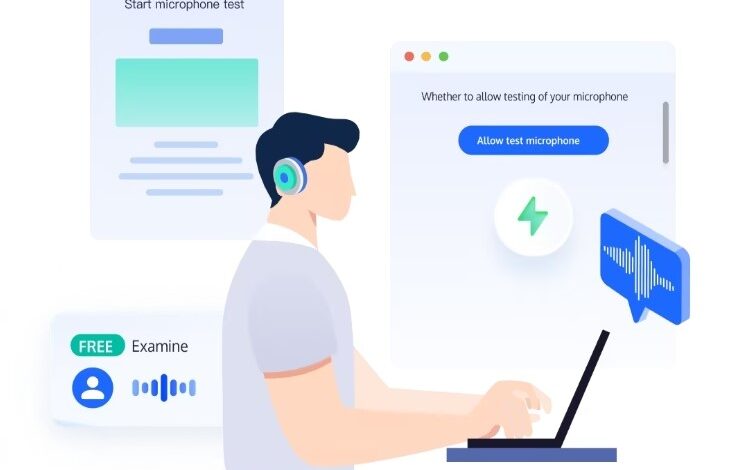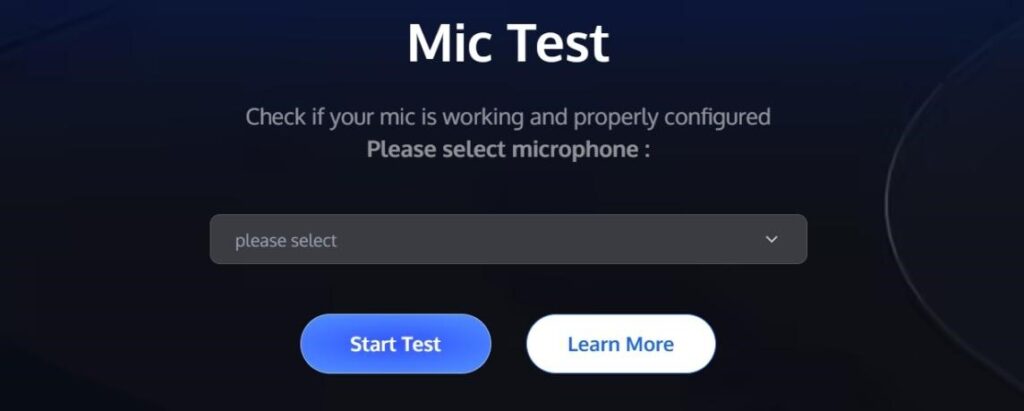How to Test Your Microphone Online: A Step-by-Step Guide

Testing your microphone online is crucial for ensuring high-quality audio during meetings, gaming sessions, or recordings. Today, various online tools allow you to check your microphone’s performance quickly and easily, directly from your browser. These tools provide real-time feedback on your microphone’s input, helping you identify and fix common issues. In this guide, we’ll walk you through simple steps to test your microphone online, recommend the best tools for the job, and offer tips on troubleshooting and improving your microphone’s performance.
Why Test Your Microphone Online?
What Problems Can Microphone Testing Solve?
When you test your microphone online, you can resolve several common issues that could otherwise disrupt your audio experience. From connectivity problems to low input volume, these tests help you pinpoint specific causes of poor audio quality. Identifying issues early on allows you to address them before they impact an important meeting or gaming session. Regular testing can also reveal issues with outdated drivers or incorrect audio settings, ensuring your microphone always performs at its best.
Benefits of Online Microphone Testing Tools
Online microphone testing tools offer many benefits that make them a worthy addition to your tech toolkit. They are convenient and accessible, requiring no downloads or installations. These tools provide instantaneous feedback, enabling you to see and hear your microphone’s input in real-time. Features such as audio visualizations and AI noise reduction further enhance the testing process. Additionally, many tools prioritize user privacy, ensuring that no audio is stored or shared during the test.
When Should You Test Your Microphone?
Regular microphone testing should be part of your routine to maintain clear and uninterrupted communication. Before any important conference call, gaming session, or recording, conducting a quick test can save you from potential disruptions. If you’ve recently updated your operating system or installed new software, testing your microphone can confirm that everything is functioning correctly. Similarly, if you notice any drop in audio quality or new background noise, an immediate test can help you diagnose and fix the problem.
What Are the Best Online Tools for Testing Your Microphone?
Free Browser-Based Testing Tools
Several free browser-based tools are available for testing your microphone, requiring no downloads or extensive setup. One notable option is Tencent’s TRTC, which offers real-time audio visualization, audio monitoring, and AI noise reduction. Simply grant the necessary permissions, and you’ll see a dynamic waveform display that indicates if your microphone is picking up sound accurately. These tools are user-friendly and provide immediate results, making them ideal for quick checks.

Advanced Online Microphone Testing Services
For more comprehensive testing, advanced online microphone testing services offer additional features and analytics. These tools might include detailed audio analysis, compatibility with various input devices, and customizable settings to fine-tune your microphone performance. Some offer diagnostic reports that highlight potential issues and suggest solutions. Advanced services are particularly useful for professionals who rely on top-tier audio quality and need more in-depth information than basic tools provide.
Key Features to Look for in Microphone Testing Tools
When selecting a microphone testing tool, consider the key features that will best meet your needs. Look for real-time audio feedback and visualizations that help you see your voice’s representation. Audio playback options allow you to hear your input directly. Ensure the tool offers privacy and security, not storing or sharing your data. Additional features like AI noise reduction and compatibility with multiple devices can enhance the tool’s functionality, offering a more thorough testing experience.
How to Fix Common Issues Found During Microphone Testing?
Troubleshooting Connectivity Issues
Connectivity problems are common but often easy to resolve. First, check that your microphone is securely connected to the appropriate input port on your device. Ensure cables are undamaged and plugged in fully. If you’re using a USB microphone, try different ports to rule out port-specific issues. Additionally, make sure your device recognizes your microphone by checking its settings. If all else fails, restarting your device can sometimes reset connections and resolve the issue.
Adjusting Microphone Settings for Better Performance
Optimizing your microphone settings can significantly enhance performance. Begin by accessing your device’s sound settings and selecting the correct input device. Adjust the input volume to ensure your voice is clear but not overwhelming. Explore advanced settings like noise suppression and echo cancellation if available. If you’re using software that allows fine-tuning, experiment with gain and equalizer settings to find the best configuration for your specific needs and environment.
Tips for Preventing Future Microphone Problems
Preventing microphone issues before they arise can save time and frustration. Regularly update your device’s operating system and audio drivers to maintain compatibility and performance. Store your microphone properly to avoid physical damage. Periodically clean your microphone and its connectors to prevent dust and debris from affecting performance. Additionally, conduct routine tests using online tools to catch potential problems early, ensuring your microphone remains reliable.
Conclusion
Testing your microphone online is a simple yet essential practice for maintaining clear and reliable audio. By using the right tools, such as a mic test online, regularly checking your microphone, and troubleshooting any issues promptly, you can prevent unexpected problems and ensure high-quality communication. Incorporate these tips and mic test online tools into your tech routine to achieve seamless audio during all your online interactions, enhancing both personal and professional experiences with crystal-clear sound quality.





